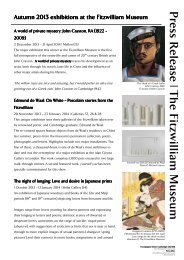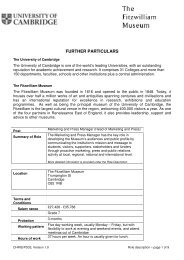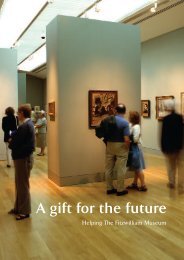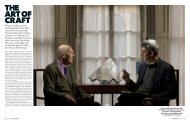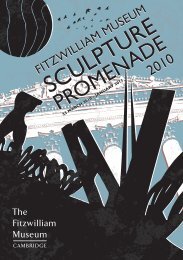Something Different: A pilot study evaluating family outreach ...
Something Different: A pilot study evaluating family outreach ...
Something Different: A pilot study evaluating family outreach ...
Create successful ePaper yourself
Turn your PDF publications into a flip-book with our unique Google optimized e-Paper software.
<strong>Something</strong> <strong>Different</strong> - Page 5 of 47<br />
case is one such example of an intergenerational intervention at a crucial juncture in the lives<br />
of both the young mothers and the young children.<br />
The Need for Evaluation<br />
The possible role of cultural institutions in combating social exclusion has yet to be fully<br />
demonstrated through robust evidence, as noted by Richey (2004):<br />
The arts possess certain qualities that enable them to reach and sometimes to<br />
affect the sources of disengagement in young people. The evidence for this,<br />
however, is invariably anecdotal or speculative. (Richey, 2004, p. 51)<br />
In order to ascertain the effectiveness of interventions, rigorous evaluation research is<br />
needed. The need for evaluation research to demonstrate impacts related to social inclusion<br />
and other agendas has become increasingly apparent in the museum sector.<br />
For cultural organizations, [...] tight budgets and increased public<br />
accountability, [... have] put pressure on staff in cultural organizations to<br />
document and justify their practices and has highlighted the need for<br />
evaluation. (Economou, 2004, p. 30)<br />
Evaluation research can help museums understand their visitors, and thereby enhance the<br />
efficacy of their interpretation and engagement activities. However, in many cultural<br />
institutions, evaluation research to measure “their impact is not undertaken at all or is limited<br />
to the personal feelings and impressions of the staff involved and to anecdotal evidence”<br />
(Economou, 2004, p. 31).<br />
Although [...] the need for evaluation is mentioned increasingly often [...],<br />
remarkably few organizations in the cultural sector have actually developed<br />
systematic strategies for carrying out visitor studies and evaluation work.<br />
(Economou, 2004, p. 31)<br />
The relatively limited capacity for high quality evaluation research within the cultural sector<br />
has also been identified by Galloway and Stanley (2004).<br />
Experience of <strong>evaluating</strong> educational activity can be limited [in museums and<br />
galleries]. Often there has, until recently, been little support for evaluation,<br />
traditionally characterized by a standard end-of-session form. (Galloway &<br />
Stanley, 2004, p. 126)<br />
By <strong>pilot</strong>ing more in-depth and robust evaluation methods than the traditional ‘end-of-session<br />
feedback form’, this <strong>study</strong> works to help fill the evidence gap that exists as a result of the<br />
increasingly high social inclusion expectations placed on museums and the aforementioned<br />
paucity of systematic empirical research to assess the efficacy of museum <strong>outreach</strong> activities.<br />
Moreover, such research has the potential to inform the design of interventions and <strong>outreach</strong><br />
activities that can effectively engage individuals and families that do not currently attend<br />
museums or galleries.



